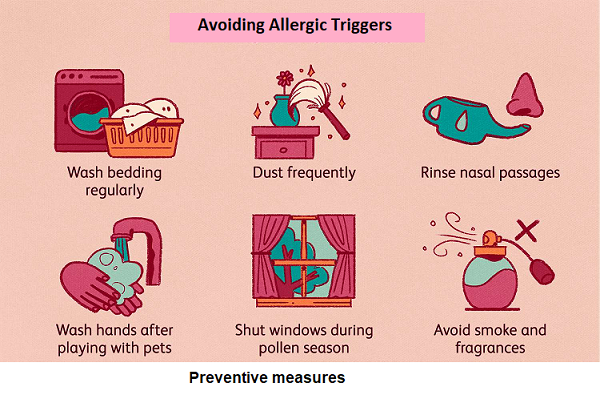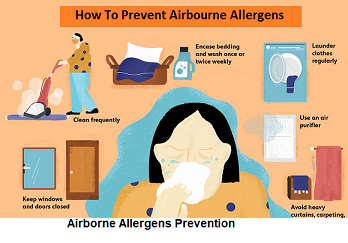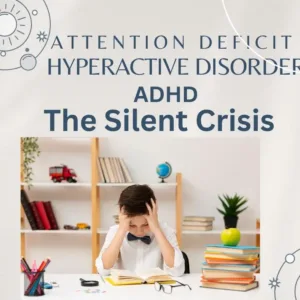Introduction:
Allergy represent a frequently encountered and misconstrued set of ailments that impact millions of individuals globally. In the United States alone, over 50 million people experience allergic reactions annually. They rank as the sixth leading cause of chronic illnesses in the United States.
Definition :
Allergic reaction :
An allergic response is your body’s defense against an allergen.
In the case of allergies, when you are exposed to a specific allergen for the first time, your body initiates a response by generating immunoglobulin E (IgE). The immune system produces these antibodies to create IgE.
IgE antibodies then adhere to mast cells, which are sometimes referred to as allergy cells, distributed in your skin, respiratory passages (airways), and the mucous lining of the interconnected organs spanning from your mouth to your anus, known as the gastrointestinal (GI) tract.
These antibodies locate the allergens within your body and play a role in their removal by binding to specialized receptors on mast cells. This interaction triggers the release of histamine by the allergy cells. Histamine is responsible for allergy symptoms.
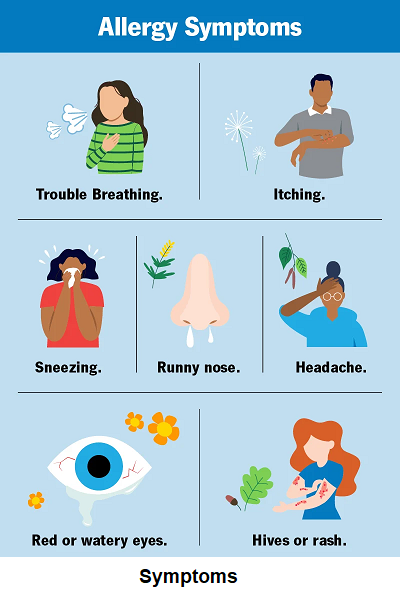
Causes and symptoms of Allergy:
The most common allergies include:
Certain foods
Food allergies develop when your body produces specific antibodies in response to a particular food. An allergic reaction typically manifests within minutes of consuming the food and can be quite severe. Common symptoms encompass:
- Generalized itching all over the body (generalized pruritus).
- Localized itching in a specific area of your body (localized pruritus).
- Nausea and vomiting.
- Development of hives.
- Swelling, including areas around your mouth, throat, tongue, or face.
In cases of IgE-mediated food allergies, anaphylaxis may also occur, either as one of the aforementioned symptoms or as a combination of these reactions. Anaphylaxis usually surfaces within 30 minutes of ingesting the food allergen.
For adults, the most prevalent food allergies include
- Milk
- Eggs
- Wheat.
- Soy.
- Peanuts.
- Tree nuts.
- Shellfish
In children, the most prevalent food allergies include :
- Milk.
- Eggs.
- Wheat.
- Soy.
- Peanuts
- Tree nuts.
Inhalants
Inhalant allergies refer to airborne particles that are inhaled into the body through breathing. These include both perennial allergens, which can affect individuals year-round, and seasonal allergens.
Inhalant allergy symptoms include:
- Runny nose.
- Stuffy nose.
- Itchy nose.
- Sneezing.
- Itchy eyes.
- Watery eyes.
If you have asthma, inhalant allergies may also act as triggers or exacerbate your symptoms, leading to issues like wheezing and shortness of breath.
Perennial allergens encompass:
- Pets: Pet allergens consist of specific proteins present in animal fur, skin (dander), urine, and saliva.
- Dust Mites: These are minuscule, eight-legged arachnids, too tiny to be seen with the naked eye, residing in household dust and fibers found in objects like pillows, mattresses, carpets, and upholstery.
- Cockroaches: These reddish-brown insects, measuring 1.5 to 2 inches in length, can cause allergic reactions through proteins found in their feces, saliva, eggs, and deceased body parts.
- Molds: Molds are microscopic fungi with airborne spores, akin to pollen. Common mold allergens include Aspergillus, Cladosporium, and Alternaria.
Seasonal allergies involve pollen, which is composed of microspores from trees, grass, or weeds and can manifest as fine dust on surfaces or float in the air. Tree pollens typically emerge in spring, while weed pollens typically appear in the fall.
- Insulin
- Chemotherapy drugs.
Symptoms include:
- Rash.
- Hives.
- Itching.
- Shortness of breath.
- Swelling.
Latex
Repeated contact with natural rubber latex can lead to latex allergies.
Common natural rubber latex products include:
- Rubber gloves.
- Balloons.
- Condoms.
- Bandages.
- Rubber balls.
The primary response to latex exposure is skin irritation, known as contact dermatitis. This condition presents as a rash on the skin area that came into contact with latex and can appear within minutes of latex exposure.
Other symptoms may include :
- Hives.
- Runny nose.
- Itchy nose.
- Difficulty breathing.
Medications
Certain medications can cause an allergic reaction.
Common medications that cause allergies include:
- Antibiotics.
- nonsteroidal antinflamatory agents(NSAIDs).
- Insulin
- Chemotherapy drugs.
Symptoms include:
- Rash.
- Hives.
- Itching.
- Shortness of breath.
- Swelling.
Latex allergies developed with repeated exposure to natural rubber latex.
Common natural rubber latex products include:
- Rubber gloves.
- Balloons.
- Condoms.
- Bandages.
- Rubber balls.
The commonest reaction to latex is skin irritation (contact dermatitis). It causes rash on the area where latex was touched. Rashes may develop within minutes of exposure . Other symptoms may include:
- Hives.
- Runny nose.
- Itchy nose.
- Difficulty breathing.
Diagnostic allergy testing is a crucial medical procedure designed to identify specific allergens that trigger allergic reactions in individuals. Allergies are the result of an exaggerated immune response to substances that are generally harmless to most people.
There are two primary methods of diagnostic allergy testing:
-
Skin Tests:
-
Skin Prick Test (SPT): In an SPT, a tiny amount of allergen extract is applied to the surface of the skin, typically on the forearm or back. A small, sterile needle is then used to lightly prick or scratch the skin through the drop of allergen extract. If an individual is allergic to the substance, they will develop a small raised bump or hive at the test site within about 15-20 minutes. The size of the reaction indicates the severity of the allergy.
-
Intradermal Test: This test involves injecting a small amount of allergen extract just beneath the surface of the skin. Intradermal tests are typically more sensitive but can be more uncomfortable than SPTs.
-
-
Blood Tests:
- Specific IgE Blood Test: This is also known as a radioallergosorbent test (RAST) or ImmunoCAP test. It measures the level of specific antibodies called immunoglobulin E (IgE) in the blood in response to various allergens. High levels of IgE antibodies to a particular allergen indicate sensitivity or allergy to that substance.
Type I immunoglobulin E (IgE)-mediated allergy testing is evaluated by measuring allergen-specific IgE. This can be assessed through skin testing (in vivo) testing or with serological tests (in vitro). Another option is a direct challenge.
Type IV delayed-type hypersensitivity allergy is checked through patch testing.
Patch testing:
In patch testing, the allergen is kept on the upper back hold with bandage and removed in 48 hours. The skin is reassessed at 72-96 hours for erythema, papules, and vesicles under the area of contact (see the image below).

The prevalent patch methods include the use of the individual Finn chamber and the rapid-use epicutaneous test known as TRUE. The TRUE test kit is equipped with 26 preloaded testing strips, each containing various chemicals commonly found in cosmetics, occupational environments, and topical medications.
Management and Treatment:
Avoiding allergens is an important treatment approach but you cant completely avoid allergic reaction with medication. So, prescription allergy medications are usually used in treating your allergies. These may include:
Antihistamines
- Fexofenadine.
- Loratadine.
- cetirizine
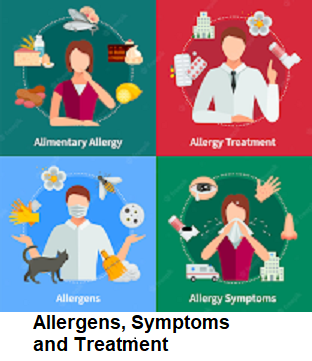
Nasal sprays
These medications are very useful and safe to use daily but they may take a some days to be effective.
- Fluticasone nasal spray.
- Cromolyn sodium.
- Antihistamine nasal sprays
Decongestants
These medications has higher side effects , one has to be cautious in case of their long-term use.
- Oxymetazoline.
- Phenylephrine
- Pseudoephedrine
Asthma medications
- Inhaled or oral bronchodilators
- Inhaled steroids.
- Oral anti leukotrienes, including Montelukast, zafirlukast and zileuton
- Injected drugs, including omalizumab, dupilumab or benralizumab.
Immunotherapy
Allergen immunotherapy, such as allergy shots and sublingual immunotherapy, exposes individuals with allergies to small, controlled doses of allergens over time to help desensitize their immune systems. This can reduce allergic reactions and symptoms.
Nasal saline irrigation
A neti pot is a device through which saline (salt) solution will be pushed in your nasal passages. It will remove all mucus and allergens stuck inside your nasal passages.
Consult and discussed your healthcare provider before using these above mentioned treatment.

Precautions to Take:
Read labels: Thoroughly check ingredient lists for potential allergens in foods and products.
Inform others: Educate friends, family, and coworkers about your allergies and emergency procedures.
Wear medical ID: A bracelet or necklace indicating allergies and emergency contact information.
Travel prepared: Pack necessary medications, snacks, and documents when traveling.
Regular check-ups: Periodic visits to an allergist for evaluation and updates on management strategies.
Frequently Asked Questions (FAQs) ;
What is an allergy?
An allergy is an exaggerated immune response to substances that are typically harmless, such as pollen, dust mites, pet dander, certain foods, or medications. Allergic reactions can range from mild to severe and may affect various parts of the body.
What are common allergy symptoms?
Common allergy symptoms include sneezing, runny or stuffy nose, itchy or watery eyes, itching of the skin, rash or hives, coughing, wheezing, shortness of breath, swelling of the face or throat, and gastrointestinal symptoms such as nausea or diarrhea.
What causes allergies?
Allergies are caused by an immune system response to allergens, which are substances that trigger allergic reactions. Allergens can be found in the environment (such as pollen, dust, mold), certain foods, medications, insect stings, or animal dander.
How do they test for allergies?
Allergies are typically diagnosed based on a combination of medical history, physical examination, and allergy testing. Allergy testing may include skin prick tests, blood tests (such as IgE antibody tests), or oral food challenges to identify specific allergens.
Is allergies hereditary?
Yes, allergies can have a genetic component, meaning they tend to run in families. If one or both parents have allergies, there is an increased likelihood that their children may also develop allergies.
What is anaphylaxis?
Anaphylaxis is a severe and potentially life-threatening allergic reaction that can occur within minutes of exposure to an allergen. Symptoms of anaphylaxis may include difficulty breathing, swelling of the face or throat, rapid heartbeat, drop in blood pressure, fainting, and loss of consciousness. Anaphylaxis requires immediate medical attention and treatment with epinephrine.
How are allergies treated?
Treatment for allergies may include avoiding allergens when possible, medications such as antihistamines, decongestants, nasal corticosteroids, or allergy shots (immunotherapy) to desensitize the immune system to specific allergens. In cases of severe allergies or anaphylaxis, emergency treatment with epinephrine may be necessary.
Is it possible to prevent allergies?
While allergies cannot always be prevented, there are strategies to reduce the risk of allergic reactions, such as avoiding known allergens, keeping indoor environments clean and free of dust and mold, using allergen-proof bedding covers, and maintaining good air quality.
Can allergies develop at any age?
Yes, allergies can develop at any age, although they are more common in childhood. New allergies can develop in adulthood, and existing allergies may change or worsen over time.
What is the difference between allergies and intolerances?
Allergies involve an immune system response to specific allergens, whereas intolerances typically involve difficulty digesting or processing certain substances, often due to enzyme deficiencies or sensitivities. Allergic reactions tend to be more severe and immediate, while intolerances may cause milder symptoms over time.
Are there seasonal allergies and year-round allergies?
Yes, seasonal allergies, also known as hay fever or allergic rhinitis, occur during specific times of the year when allergens such as pollen are prevalent. Year-round allergies can be triggered by indoor allergens such as dust mites, pet dander, mold, or certain foods, and symptoms may persist throughout the year.
Can allergies affect mental health?
Yes, allergies can have an impact on mental health, as chronic allergy symptoms may contribute to feelings of frustration, irritability, fatigue, and decreased quality of life. Allergies have also been associated with an increased risk of mood disorders such as depression and anxiety.
